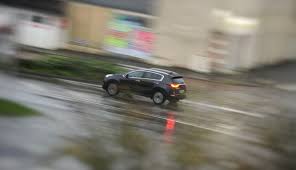
PUMPA - SMART LEARNING
எங்கள் ஆசிரியர்களுடன் 1-ஆன்-1 ஆலோசனை நேரத்தைப் பெறுங்கள். டாப்பர் ஆவதற்கு நாங்கள் பயிற்சி அளிப்போம்
Book Free DemoConsider that you're stooped at the signal due to traffic, and once you see the green signal, suddenly you're increasing the speed of your bike/car to move fastly, and this act of increasing the speed is called, acceleration.

Acceleration (a):
The acceleration can be defined as the rate of change in velocity.
When the object undergoes acceleration, its speed and/or direction change(s).
If an object changes its speed or direction, then it is said to be accelerated.
The change in velocity can be written as .
Where \(v\) is the final velocity of an object and \(u\) is the initial velocity of an object.
The SI unit of acceleration is .
Types of acceleration:
- Positive acceleration
- Negative acceleration
Positive acceleration:
If the velocity of an object increases with respect to time, then the object is said to be in positive acceleration or just acceleration.
Example:
A bike moving with increasing speed has a positive acceleration.
After the green signal, a vehicle moves fastly.
Negative acceleration:
If the velocity of an object decreases with respect to time, then the object is said to be in negative acceleration or deceleration or retardation.
Example:
A running car slowly stops.
A rolling ball that slowly stops.
Reference:
Image credits:
Car image: https://www.pxfuel.com/en/free-photo-xstno